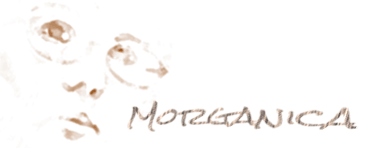 Lemme borrow a writer’s proverb for a sec:
Lemme borrow a writer’s proverb for a sec:
I hate coldworking. I love having coldworked. More particularly, I love having coldworked by hand.*
I’ve so far found nothing to match the incredible, silky finish you get with hand-coldworking a piece of glass, so I was really interested in Paul Tarlow’s new book, Coldworking Glass without Machines: A complete guide to creating better fused, lampworked & blown glass artwork without spending a small fortune on big equipment.
It’s US$27.95 (if you count shipping and handling), and you can buy it at the Corning Museum’s GlassMarket, HIS Glassworks, and Vitrum Studio.
Paul’s the co-owner of Helios Kiln Glass, a studio, school and store in Texas, and has published a number of useful online tools, such as his handy-dandy glasscasting calculator. The book doesn’t seem to be available through his store (which is a puzzler), but I suspect he’ll correct that soon.
This isn’t a huge tome on every possible coldwork technique. Cover-to-cover, it’s only 48 pages and it has really big type. It is a nice, basic introduction to the stuff that coldworking world seems to think everybody already knows:
- What kinds of abrasive are out there, and which types are best for glass
- What the colors mean on 3M diamond pads
- What grit sequence(s) work best
- How to tell when you can move to the next grit size
- How to get some of the more popular finished looks in today’s glass art
I’d recommend CGwM to those just starting out in coldwork, particularly if they think it’s impossible obtain a decent finish without expensive machines (absoLUTEly not true).
However, if you’ve already done some handworking, you probably already keep know most of what you’ll find here. It’s certainly not a substitute for Jonathan Schmuck’s excellent Joy of Coldworking (and it doesn’t claim to be, either).
For example, there are good reasons why a finish done by a machine with diamonds has a different look (and feel) from handworked glass and is frequently less desirable; those kind of explanations are left out of this book.
And handworkers tend to have their own favorite techniques–I don’t think there’s a single standard for this stuff. The book covers most but there are undoubtedly more.
Paul doesn’t mention my very favorite handworking tool (aside from plain old wet-dry sandpaper): Flexible diamond hand pads. They come in roughly every grit (including polishing) you’ll ever need, they let you work all the glass instead of merely knocking off the high spots (which means a LOT more effort if you want an even finish), and they do a marvelous job with inside curves.
They’re relatively inexpensive, and when the diamonds wear off, the remaining sponges are perfect for backing wet-dry sandpaper. BTW, wet-dry sandpaper, all by itself, produces, hands-down, the most gorgeous silky finish on the face of this earth.
Still, I picked up some tips that’ll help my next handworking project, and that’s really the object of the game, right?
*In the interests of full disclosure: I actually believe there are two kinds of coldworking, cleanup and sculpture. In cleanup you’re truing up and polishing edges, evening out surfaces, removing all scratches so you can get to the next grit, etc. THAT stuff is what I hate.
Sculpting is a whole different ball of wax. The more casting I do, especially with transparent billet, the more I enjoy shaping and carving detail into the fresh-from-the-mold chunk of glass. I just heard a lecture from Richard Whiteley (of Canberra fame), in which he said that glass fresh from the kiln is simply a starting point for what will happen in the coldshop.
The minute he said that–whoa!–I realized he was exactly right. The glasscarving I do on a cast sculpture is as much a part of the art as the original modelmaking.
So, to correct my original statement: I hate doing cleanup coldworking. I love having done cleanup coldworking.

I just getting my equipment and have a 24in lap sander, 10in saw a claim shell kiln. sand blaster as well.
Thnk you
Shereen Timmerman
I read this little book in the Rakow Library at the Corning Museum of Glass last week while I was there for a Josh Simpson/Gabi Kuestner course. Gabi was teaching her wonderful coldworking techniques. The book is a good starting point and a lot of “duh” moments went off in my head. I’d recommend it to people just starting coldworking.
I’ve just got it. Compliments the Schmuck well. More folk should start here then onto the machinery so that they know “what” they are actually doing.Save time and mishaps, and opens the door to more imaginative cold work.
I thought it was a little pricey for 48 pages of big type but Paul is a great guy and I’m happy to support him.